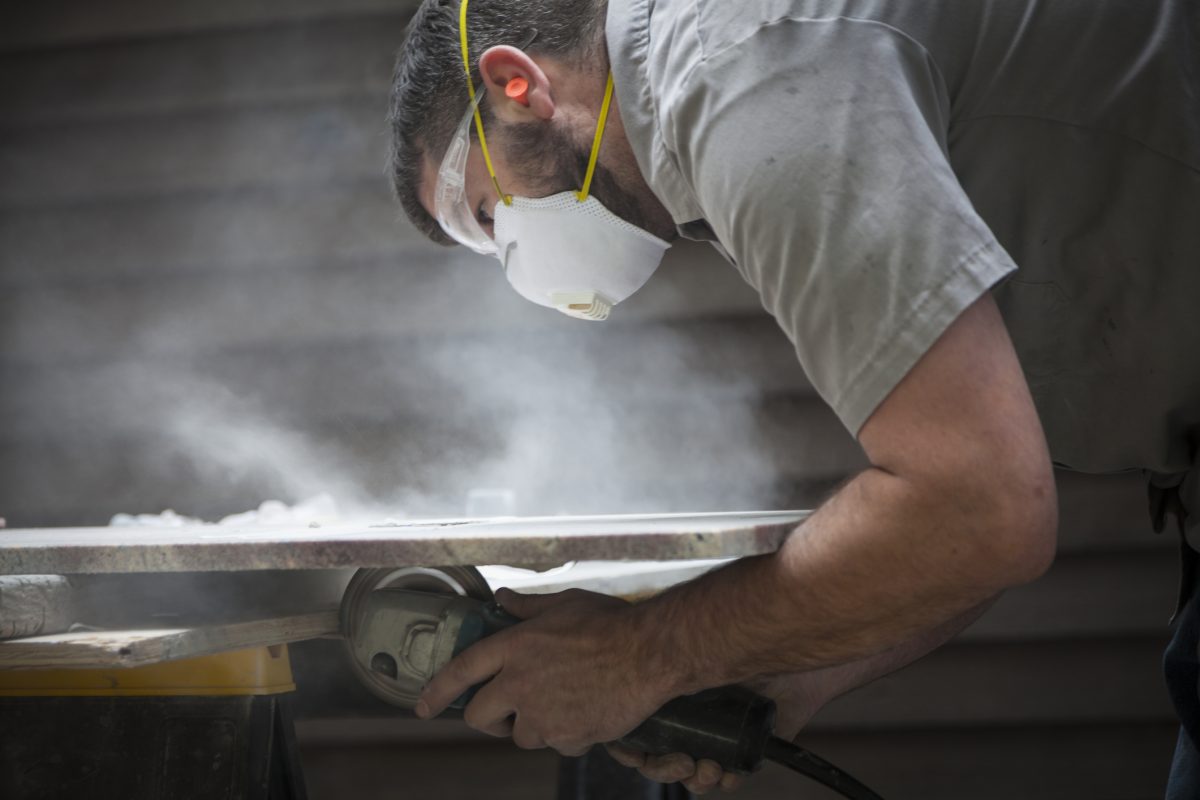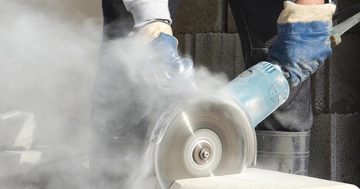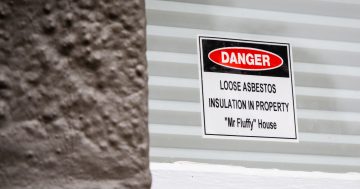
Changes to dry cutting silica-based products have been pushed back to October 2022 to give WorkSafe ACT more time to “obtain expert advice”. Photo: Bill Oxford.
A ban on dry cutting silica-based products including bricks, tiles, pavers and artificial stone benchtops has been put on hold while WorkSafe ACT goes back to the drawing board.
The first part of an amendment to the ACT’s Work Health and Safety (WHS) regulations was scheduled to come into effect on Thursday, 14 July. This prohibited tradespeople and businesses from cutting material containing crystalline silica with a power tool without using water to keep the dust down.
Penalties included fines of $6000 for an individual and $30,000 for a body corporate.
In a statement on Wednesday, 13 July, WHS commissioner Jacqueline Agius deferred sections of the amendment after “industry stakeholders brought a range of issues to my attention”.
“To allow additional transition time for industry and also time for me to consider these activities and obtain expert advice, I have issued an exemption for parts of the amendment,” she said.
“The requirement to use wet cutting methods in combination with another control and respiratory protective equipment (RPE) will not be enforced until 17 October, 2022.”

WorkSafe ACT commissioner Jacqueline Agius. Photo: WorkSafe ACT.
Silica, or silicon dioxide, is a common naturally occurring mineral, found or manufactured in different forms broadly categorised as crystalline or non-crystalline (amorphous).
The most common form of silica is quartz, but it is also found in some stones, rocks, sand, gravel and clay. It is frequently used in bricks, pavers, tiles, concrete and artificial stone bench and vanity tops.
Silica dust is 100 times smaller than a grain of sand, so workers can breathe it in without knowing. According to WorkSafe ACT, about 600,000 Australian workers each year are exposed to silica dust at work, including miners, commercial and residential construction workers, farmers, engineers, bricklayers, road construction workers, and those working in demolition.
WorkSafe ACT estimates show more than 230 lung cancer cases in Australia each year are caused by exposure to silica dust at the workplace.
The ACT Government first announced a Silica Dust Reforms Action Plan in April 2022. The reforms were to be delivered in two parts (or tranches) to “give workers and persons conducting a business or undertaking (PCBU) the time to adjust to the new requirements”.
Part one included the ban on uncontrolled dry cutting and mandatory silica awareness training for workers at high risk of material containing crystalline silica, similar to that already in place for asbestos.
Part two is on track for 1 January, 2023 and requires PCBUs to undertake regular air monitoring to ensure workplace exposure limits don’t exceed 0.05 milligrams per square metre over an eight-hour time weighted average.

Up to 95 per cent of engineered stone, including artificial stone benchtops, consists of crystalline silica. Photo: Callum Hill.
“Once implemented, these new requirements will provide specific actions for workplaces to ensure the risk of silica dust exposure is prevented or minimised,” ACT Minister for Industrial Relations and Workplace Safety Mick Gentlemen said previously.
Master Plumbers ACT (MPA) was one of the industry bodies to raise concerns about the amendment and recommend a delay. In a letter to Mr Gentlemen, master plumbers president Jason Tait said more prior consultation would have highlighted “practical implementation issues”.
“There are many instances where it remains necessary to use an accepted controlled dry cutting method instead of a wet cutting method because the material or location may be water damaged, or where electrical hazards exist,” he said.
“MPA also has serious concerns around whether many existing tools could be retrofitted to safely deliver a water suppression system.”
As it stood, Mr Tait said the amendment opened up the industry to significant risk around worker health and safety.
Ms Agius welcomed the feedback but said all PCBUs would still be expected to apply all reasonably practical control measures when modifying materials containing silica, “including where possible, wet methods”.
“WorkSafe ACT will continue to undertake inspections in line with the Compliance and Enforcement Policy and take regulatory action as required.”



















